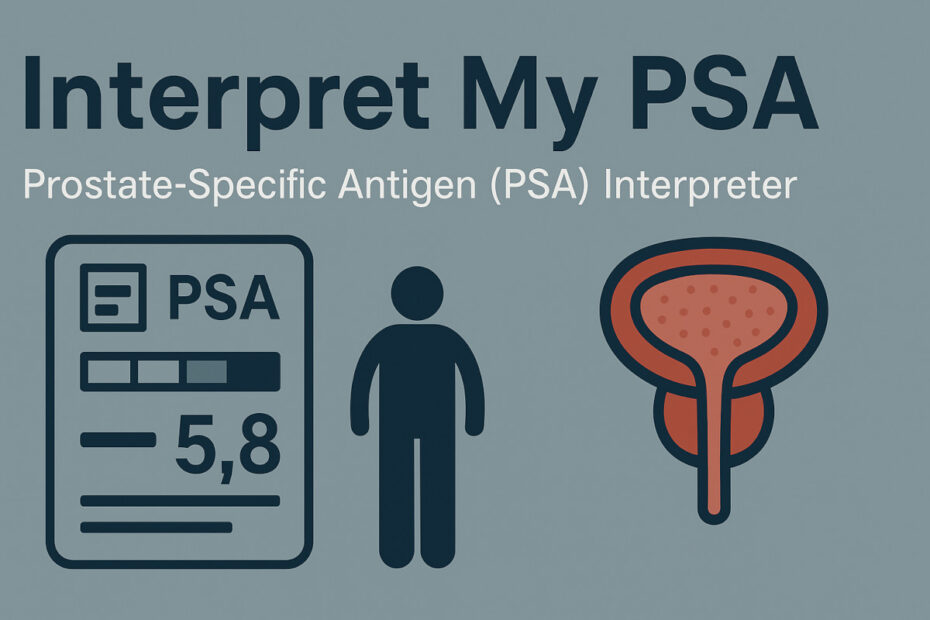Last Updated on August 24, 2025 by Max
Introduction
Prostate-specific antigen (PSA) testing remains one of the most widely used tools for detecting prostate conditions, from benign enlargement to prostate cancer. Yet, interpreting PSA results is often confusing, especially in the “gray zone” between normal and abnormal values. Our PSA Interpretation Helper is designed to make sense of these numbers using age-specific reference ranges and modern reflex tests such as Percent Free PSA, the Prostate Health Index (PHI), and the 4Kscore. Backed by authoritative research and clinical guidelines, this interactive tool provides an evidence-based way to understand your results and prepare for meaningful discussions with your doctor.
How to Use This Tool
- Enter your PSA result in nanograms per milliliter (ng/mL).
- Select your age group to compare against age-specific reference ranges.
- If available, add reflex test values such as Percent Free PSA, Prostate Health Index (PHI), or 4Kscore. These provide extra context when PSA is in the “gray zone.”
- Review the indicator bar and summary to understand whether your result falls into low, typical, elevated, or high categories.
- Use the interpretation as a discussion aid with your clinician. It is not a substitute for professional medical advice.
PSA Interpretation Helper
Enter PSA and age band. Add free PSA and p2PSA to see %free and PHI. We’ll also show PSA density and let you record a reported 4Kscore. Educational only.
Trend & reported risk (optional)
Conclusion
This PSA interpretation combines age-specific ranges with advanced markers like Percent Free PSA, PHI, and the 4Kscore to provide a clearer picture of prostate health. These tools improve specificity, reduce unnecessary biopsies, and help guide smarter conversations with your doctor.
🔗 For a deeper dive, read our full article: Prostate-Specific Antigen (PSA): What You Need to Know .
Disclaimer
This tool is for educational purposes only and does not replace professional medical advice. Always consult a qualified healthcare provider regarding your PSA results or any health concerns.
References
- Oesterling, J.E., et al. (1993). Age-specific reference ranges for serum PSA. JAMA.
- Carter, H.B., et al. (2013). Early detection of prostate cancer: AUA Guideline. J Urol.
- Catalona, W.J., et al. (1998). Use of percent free PSA for early detection of prostate cancer. JAMA.
- Loeb, S., et al. (2015). The Prostate Health Index improves detection of clinically significant prostate cancer. J Urol.
- Stattin, P., et al. (2015). The 4Kscore test reduces unnecessary biopsies. Eur Urol.






